Sony KDL-52XBR4 LCD TV Measurements
Settings
Keep in mind that unit-to-unit variations, viewing environment, source, and screen (in the case of front projectors) might render the settings I used less than optimum on some samples of this display. If you try these settings, I strongly recommend that you do so as a starting point, following up with one of the several display-setup DVDs on the market to make certain that the basic picture settings are correct for your situation. Confirmation of the grayscale settings requires a full professional calibration.
Picture Menu
Picture mode Cinema
Back Light Min
Picture Max
Brightness 55
Color 47
Hue 0
Color Temperature Warm2
Sharpness 35
Noise Reduction Low
MPEG Noise Reduction Off
DRC Mode Off
DRC Pallet N/A
Advanced Settings
Black Corrector Off
Advanced C.E. Off
Gamma Off
Clear White Off
Color Space Standard
Live Color Off
White Balance
- R-Gain 0
- G-Gain -2
- B-Gain -1
- R-Bias -7
- G-Bias -4
- B-Bias 0
Edge Enhancer Off
Screen Menu
Wide Mode (aspect ratio) Full
Auto Wide On
4:3 Default Off
Display Area Full Pixel
Video Options Menu
Motion Enhancer Standard
CineMotion Auto1
Contrast & Resolution
Peak white level
- Full screen 54.7fL
- 100 IRE window 54.3fL
Peak contrast ratio 1697:1
Overscan
- 480i/p 1% (sides), 0% (top/bottom)
- 720p 0%
- 1080i/p 0%
- HDMI/DVI 37.1MHz
- Component 37.1MHz
The KDL-52XBR4 behaves oddly when it comes to black level. Switching from an image with a high average picture level (APL) to a black screen, I measured a black level of 0.032fL immediately after the switch, which translates to a peak contrast ratio of 1697:1. After about 12 seconds, I saw the black field deepen and measured a black level of 0.008fL, which increased the peak contrast ratio to 6787:1. Mind you, this happened even though I had turned off all dynamic controls.
Interestingly, when I called up the DVD player's display over a black full field, the black level rose to its elevated value of 0.032fL over about nine seconds and stayed there as long as the player's display was active. When I exited the display, the black level returned to 0.008fL after about 12 seconds.
These shifts were visible on black full fields but not on normal program material. When watching movies or TV shows, the black level remained elevated for the most part because the APL rarely drops low enough for long enough to allow the black level to drop. This is why I listed the higher black level in my measurements above.
The HDMI and component inputs both rolled off the 37.1MHz burst, but the component input was worse in this regard. Still, the burst was visible in both cases.
Grayscale & Color Temperature
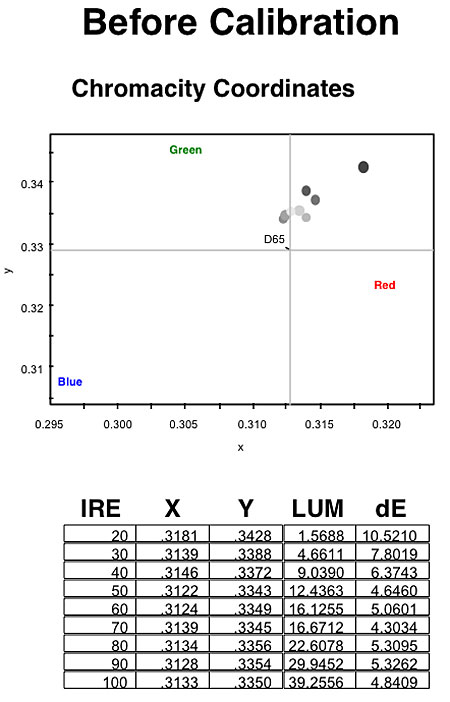
Before calibration, the grayscale tended toward green with the color temperature set to Warm2.
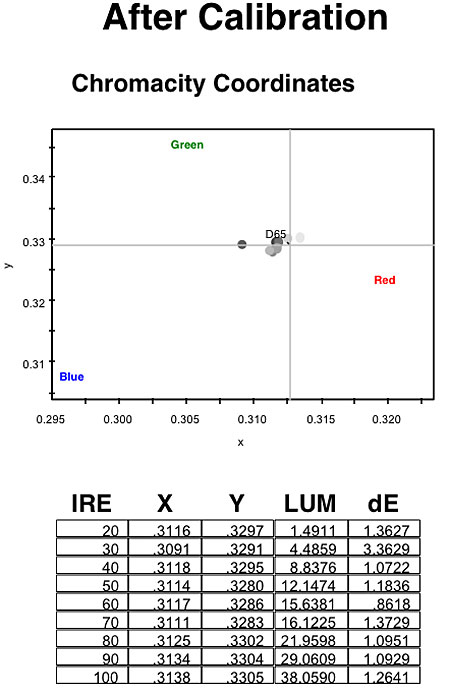
Calibration brought the grayscale much closer to D65.
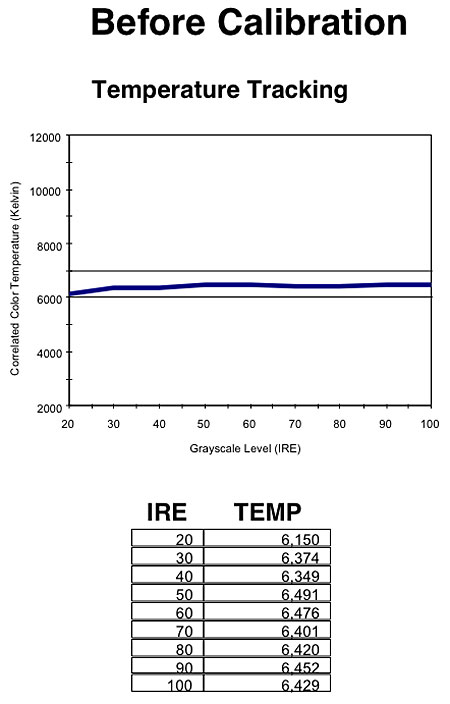
The pre-cal color temperature was slightly low, especially at the low end of the brightness range.
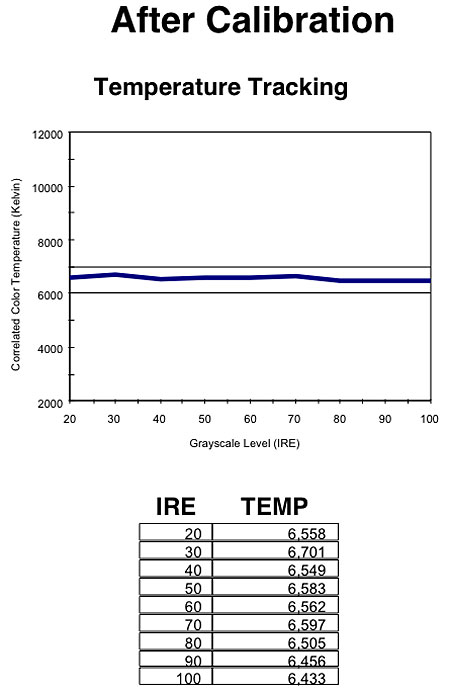
Calibration improved the color-temp tracking, though it wasn't that far off to begin with.
Color Accuracy
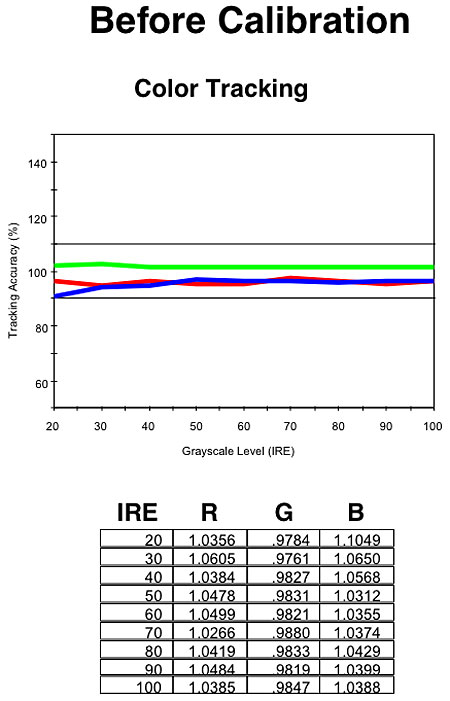
As you might surmise from the pre-cal grayscale measurements, green was the dominant color.
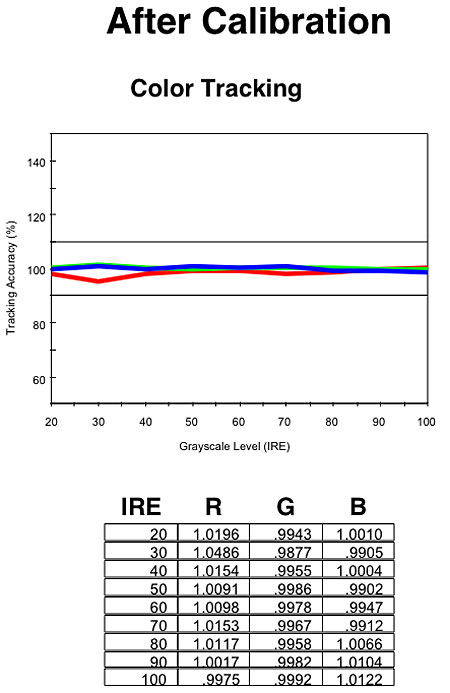
Post-cal, the color balance was much better.
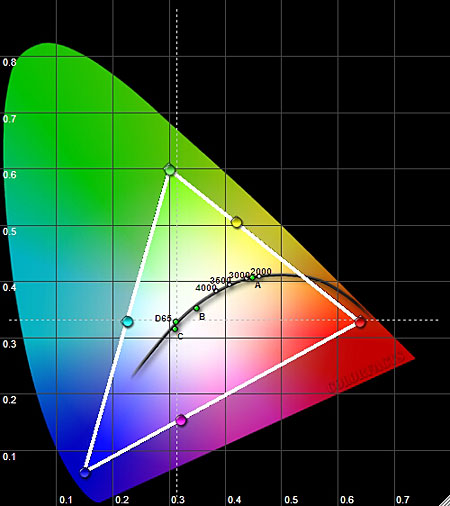
Setting the Color Space control to Standard resulted in nearly perfect primary and secondary color points.
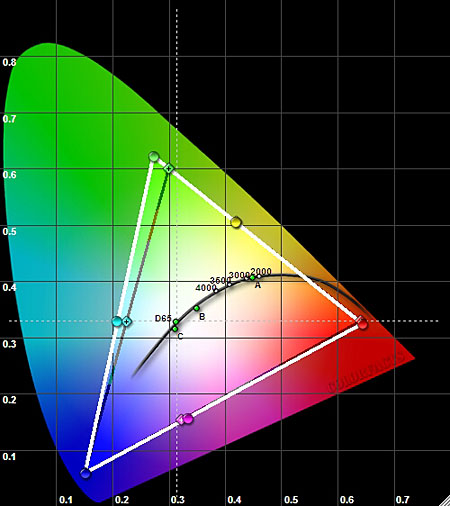
The Wide Color Space setting yielded oversaturated green and cyan, slightly oversaturated red, and slightly reddish magenta. Clearly, the Standard setting is the one to use.




























































